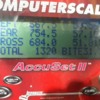I believe that the race weight of the Gp4 cars was 2650 pounds, 1202kg's. (Maybe the reason for BW's goal?

)
That's with the aluminum skins, plexiglass windows, and all of those holes punched in the chassis.
The drivers were like horse racing jockies, all 125 pounds or less. Jackie Stewart. Mario Andretti types.
When Ford evaluated the Pantera for racing, weight and serviceability were negatives in that evaluation.
The 289 Cobra is 2,200 pounds. The GT40 is lighter.
I don't think you can get the car down to 1000kg's? You can't acid dip the body.
With aluminum heads and block you can save about another 150 pounds.


